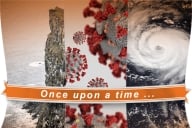You have /5 articles left.
Sign up for a free account or log in.
Public sociology. Public and applied history. Public humanities. Science in the public interest. Across the disciplines, we hear renewed calls for an active public role for academics. We also hear occasional warnings. That is heartening—and necessary in our world of misinformation and division—but it is disheartening, as well.
My reservations stem from the constant need of the proponents of interdisciplinarity going public to reinvent themselves, as if we’ve seen no important historical precedents. The fact is that we could probably establish a documented cycle, like a sine curve, of the recurring calls for knowledge “applied” to nonacademic realms since at least the 1960s. The imperative to self-promote with false claims of originality is as much a weakness as a strength. It also denies the ability to learn from past successes and failures.
Take my own discipline of history as a prominent example. Public history dates back well into the 19th century with historians engaged in the foundation and operation of historical societies, museums and libraries, from the local to the national. It also includes historically aware journalists seeking to inform their readers soundly. And, of course, both scholars and other writers published popular history in various forms. The same is true for scientists, sociologists, political scientists and others.
To some extent, opportunities and practices changed with the establishment and expansion of the Ph.D. as a distinct—although never completely exclusive—rite of passage for “practicing” history either publicly or privately within the bounds of universities. It served to distinguish the academic from the layperson by formalizing and segregating professional disciplines.
Yet with many activities, history—and the sciences, too, as distinct disciplines or collectively—never stopped their public dimensions. While the Ph.D. became a more common gatekeeper, it was never an exclusive requirement. From the late 19th through the early 21st century, nonacademic institutional and popular writing roles increased. They included founders and managers of historical and artistic museums and societies, popular writers and journalists, policy advisers, and others. They embraced nonacademic or trans-academic participation in social, political and cultural commentary and criticism, and both formal and informal involvement in policy analysis. To some, “public” became “applied.”
For better and for worse, disciplines going public have also responded to pressures, sometimes crises, of specific times. From the late 1960s into the 1980s—and never quite stopping—the lack of entry-level jobs for new Ph.D. graduates led to campaigns to expand and create public employment possibilities. Combined with periodic crusades to make the “practice of history” more “relevant” and/or a moneymaking venture, those efforts illustrate the best and the worst of going public.
On one hand, the most severe periods of academic job crises led to rampant efforts for private and private entities to employ their “own historian” and sometimes corresponding attempts to market history in print, audio, video and physical objects. On the other, we saw a relatively small number of first-rate public history graduate and certificate programs that produced leaders in the field.
We are witnessing a recurrence today as both new and continuing job shortages, as well as layoffs and threatened censorship—aka free speech violations—and necessary efforts to apply scholarly knowledge to combat dangerous misinformation combine with sometimes outrageous self-promotional schemes. Today’s intemperate false competition between the documented and professionally revised “1619 Project,” and the fringe ideological and anti-historical “1620,” “1776” and “1836” Projects for “canceling” and teaching an inclusive fact-based American history dramatically illustrate this.
Responsible professionals should respond to direct stimuli with new initiatives as well as learn from and maintain older ones. These range widely, as the available literature on public history illustrates: from local, community and urban histories; histories of social groups of all kinds; archiving; and alternative modes of presenting the results of research. In so doing, we must be acutely aware of changing media and communications environments. We have a lot to learn.
In an opinion essay that lacks historical context, “I Love the Public Humanities, But,” Feisal G. Mohamed complains that “instituted incautiously they can threaten faculty speech and encourage cash-chasing.” Surprisingly, Mohamed appears unaware that nothing he identifies is new, including free speech concerns (recall McCarthyism, civil rights, antiwar activists, gender rights and, recently, “conservatives”). Nor is the temptation to turn going public into what he awkwardly labels “cash-chasing” by universities seeking to attract new donors and shift institutional expenses. In reality, and contradictorily, that has not developed into a problem except with right-wing foundations.
All of what he calls “many excellent initiatives” like prison education, K-12 outreach or engagement with libraries, galleries and museums have established precedents. His example of Nikole Hannah-Jones’s initial denial of tenure at the University of North Carolina at Chapel Hill doesn’t apply; she was not a professional academic. Her case is different. It was fair of him to observe, “I am concerned that universities … will find a way to ‘cock it up,’” but that is not a novel fear. I can attest to institutional obstacles and contradictions throughout my nearly 50-year academic career, one that often blended scholarly and public activities.
I call today for a renewed set of initiatives by scholars across the disciplines going public. First, we must learn from our history, from the successes and failures as suggested above. Some of this involves means of communication, some of it addresses modes of rhetorical expression and some of it means being prepared to challenge and correct both politicians’ and the media’s near total lack of historical memory. Second, we must work together both within and across disciplinary lines—call it interdisciplinary, transdisciplinary or intra- or extra-disciplinary, as you will. Society’s complications today are not defined by disciplines.
Finally, scholars from different specializations need to work together to remove the artificial barriers of different bodies of knowledge and address common public issues, problems and needs. Taking these steps will finally fulfill the promise of more than a century of initiatives and also intersect significantly with other contemporary discussions about disciplines and interdisciplines—equality and equity, and private and public, among many others.








